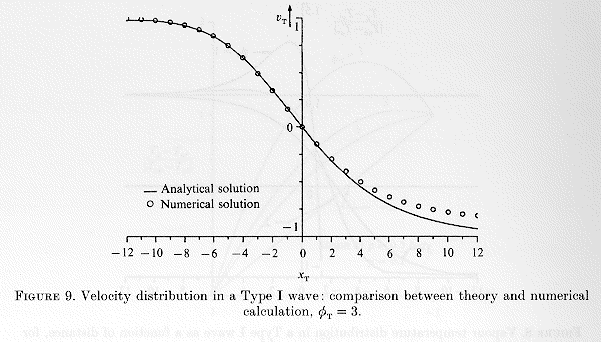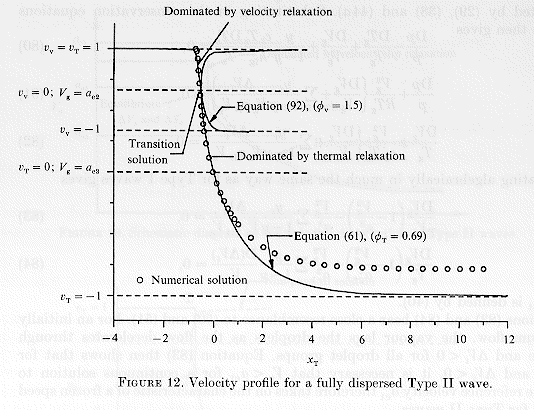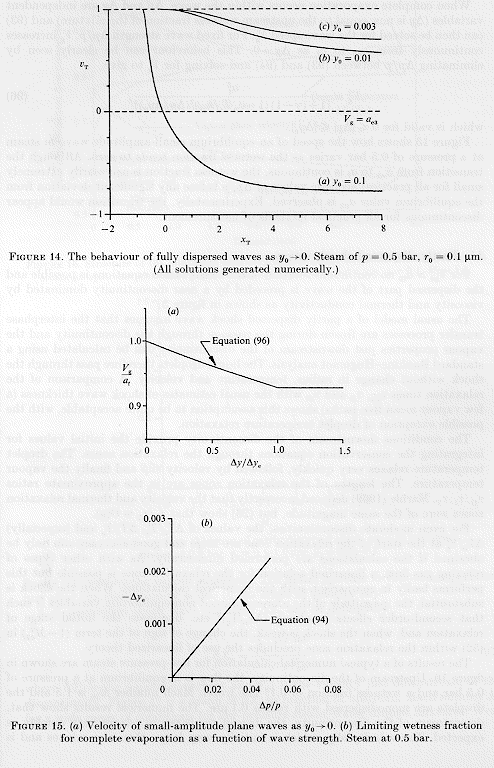|
|||
A study of the structure of stationary, fully and partly dispersed, normal shock waves in steady vapour-droplet, two-phase flow is presented. Pure substances only are considered, but, unlike most previous work, the droplet population is allowed to be polydispersed. It is shown how the effects of thermal relaxation for such a mixture can be elegantly incorporated into the analysis. Three types of fully dispersed wave are identified. Type I waves are dominated by thermal relaxation and an approximate analytical solution is presented which gives results in close agreement with accurate numerical solutions of the governing equations. The analysis predicts some unexpected behaviour of the thermodynamic variables and demonstrates the correct scaling parameters for such flows. An approximate analysis is also presented for Type II waves, dominated by both velocity and thermal relaxation. Type III waves, where all three relaxation processes are important, are of little practical significance and are only briefly discussed. Partly dispersed waves are also considered and the results of a numerical simulation of the relaxation zone are presented. A linearized solution of this problem is possible but, unlike other relaxing gas flows, does not give good agreement with the more exact numerical calculations. The apparent discontinuity in the speed of sound in a vapour-droplet mixture as the wetness fraction tends to zero has been responsible for some confusion in the literature. This problem is reconsidered and it is shown that the transition from the two-phase equilibrium to the single-phase frozen shock wave speed is continuous. |
 |
 |
 |
 |
|
|
|